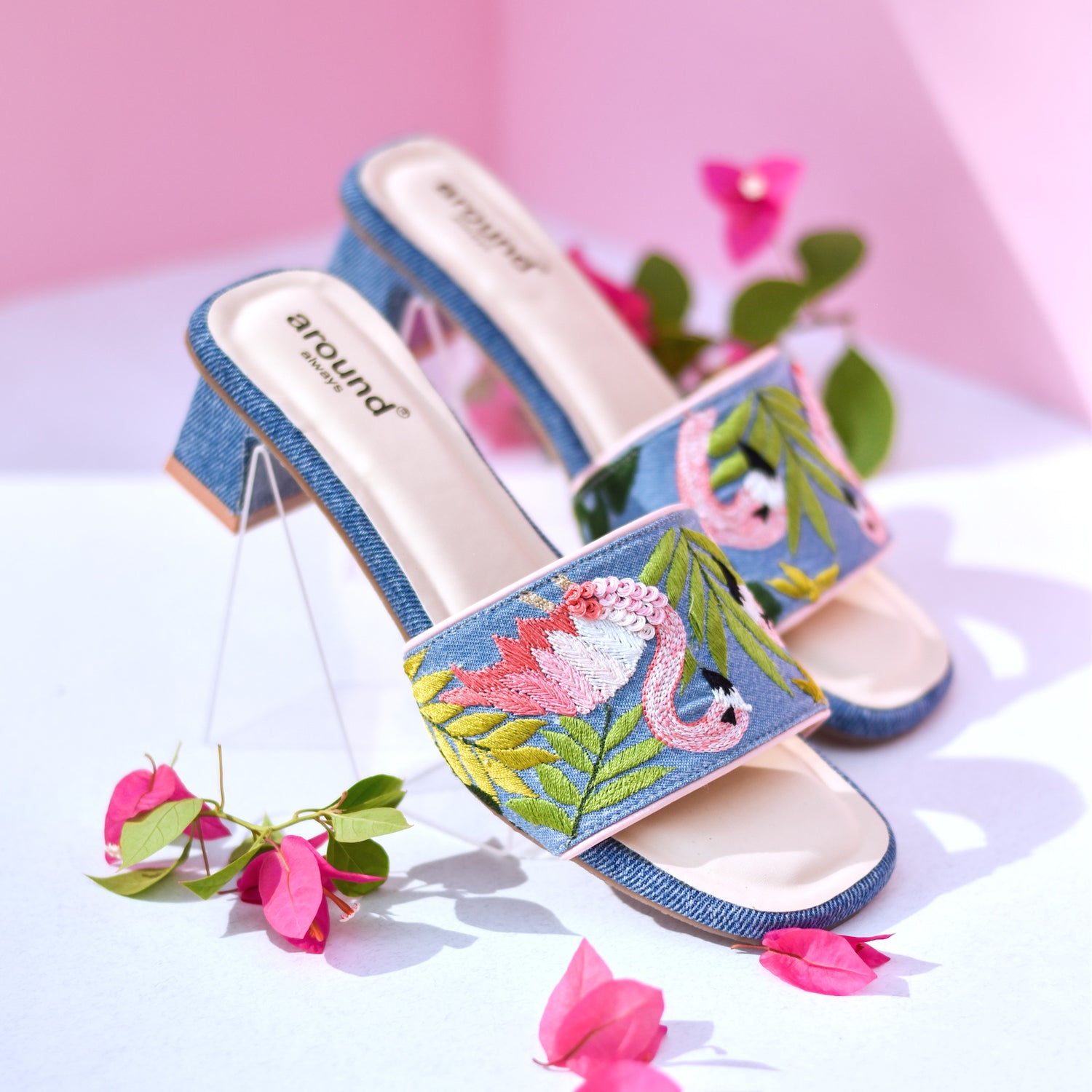
Kachchi Embroidery
Share
Mahatma Gandhi once quoted “Mechanization is good when hands are too few for the work intended to be accomplished.” Moreover a machine cannot emulate the finesse of a human hand.
Kachchi embroidery is just an example of one such instance where the work of hand is easily distinguished. As they rightly say the work of a craftsman is best left to him.
Close your eyes and think of Gujarat for a minute. What comes to your mind? Amitabh Bachchan promoting tourism of the state? Kite flying in the clear sky, decorated camels on white sand of Rann? Women playing garba in colourful embroidered ghaghra cholis? Gujarat is the greatest contributor to image of India as a colourful country.
Gujarat has a rich legacy and a unique heritage of embroidery that it has offered to India and the world. There are various communities in Kutch that are engaged in Kutchi or kachchi embroidery. Not just one or two but 16 different types of embroideries are practiced in Gujarat. All of these communities have their own, unique style of embroidery, different motifs, patterns that give them a visual identity. Even a person’s social status can be identified through the embroidery he or she wears.
It is said that Kutch embroidery was brought about by ‘Kathi’ cattle breeders who were brought by the mythological figure ‘Karna’ from the Mahabharata. Eventually these wanderers settled down and produced some fine needlework which displayed a variety of elements, designs, themes, patterns and moods - and this is how Kutch work actually originated. It is also believed that mochis or shoemakers were taught Kutch embroidery 300 years ago by a Muslim wanderer in Sindh and that is what started the tradition.
A lot of the Kutch embroidery is influenced by various architectural designs. This embroidery is also influenced by romantic motifs as well as patterns of human figurines in dancing poses and dancing peacocks too. Delicate beadwork is also incorporated with great finesse. Things seen in daily lives; flowers and bushes, peacocks and camels, women doing household chores and men tending to cattle, also form inspirations for these beautiful designs. The use of things of daily lives in the designs further establishes connect with the common folk and depicts life as it actually is. The work is done on fabrics such as Cotton and Silk. Kutch embroidery is mainly done in colors such as Green, Ivory, Indigo, Black, deep Red, Yellow and off White.
People of different communities like Rabaris, Ahirs, Jats, Bhardawas, are employed for embroidery work that possesses their own style of embroidery. Jats uses cotton and quality silk to create different motifs and patterns for women outfits. The Rabari community creates their typical embroidery work on a maroon background with enclosed motifs and adorning it with mirrors of different shapes and sizes. Embroidery done by kathi community of Saurashtra region is also well renowned. The women of this community have a fancy for black cloth embroidered in crimson, yellow, golden, violet and white in combination with greens and blues that renders vibrancy and enhances the beauty of the item.
Kutchi women who have inherited the skills from their mothers and grandmothers and need no pattern traced on the cloth or designs in front of them. All they need is a cloth, needle and thread. They sit in the shades of their home and embroider and embroider and embroider!! Main stitches that they use to create patterns, that are bizarrely beautiful, are darning stitch, chain stitch, herringbone stitch, cross stitch and buttonhole stitch. Buttonhole stitch is extensively used to attach mirror on the fabric which is a characteristic identity of Gujarat. It is thought to have originated with the use of naturally occurring mica found in the deserts. But now it is being so extensively used, that mirror glasses are manufactured in local towns thus making it another flourishing and attractive business of the region. At Around Always, we tried recreating the magic of the mirrors in the trendy juttis and wedges for occasional settings.


Beautifully clashing colours, combinations that a trained designer would be apprehensive to use, are arranged in effortless harmony by the women, for whom embroidery is just another part of their daily chores. These women embroider on everything from garments to various items of home décor like toran, bed covers, pacchipatis, chaklas and even camel decoration.
Traditionally, the embroidery was done for personal use, dowry and gifts but now designers are lending this embroidery a different sense of sensibility to bring whims of colour in our concrete and dull life. In other words, they are adding colours to our lives while seemingly doing only what they think is part of their job.






